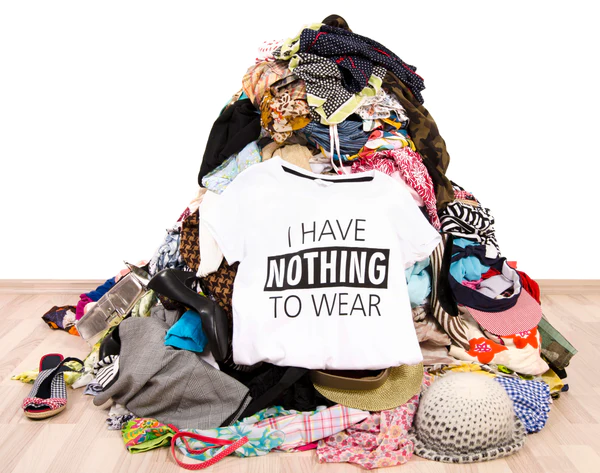Fast fashion is a bad bad thing

Fashion is something that we see all the time in our everyday lives – on the runway, on the cover of our favorite magazines, online, at the mall, in the school hallways, and especially in our closets. It’s extremely hard to keep up with the endlessly-flowing cycle of fashion trends, especially if that new fashion trend includes something like a ten thousand dollar Chanel coat that somehow every celebrity wears the day after it hits the runway.
That’s where fast fashion comes in. Fast fashion brands have become a multi-billion dollar industry in the last 25 years, with companies like Zara, H+M, Forever 21, and Shein dominating the market.
Many people like these companies because they are accessible, affordable, and always seem to get the latest fashion trends out as quickly as possible. Shein’s popularity especially has skyrocketed in recent years. Founded in 2008, they just became a 100 billion-dollar company in April of 2022.
The upside to fast fashion is the low cost for consumers. Shirts often sell for $4.00. However, the real cost it took to make that shirt can be found in the negative impact on the environment and on the underpaid workers who manufacture it. In the past, older fast fashion companies like Zara put out 20,000 new styles every year. According to Business Insider, newer companies like Shein put out 6,000 new styles each day. That’s around 2,190,000 new designs being created every year.
The environmental impact alone is staggering. For example, according to Water Equivalency Facts, 2 pounds of cotton is required to make one pair of jeans, but it takes around 2,700 gallons to make those two pounds of cotton. Putting that in perspective, National Geographic writes that it’s “enough drinking water for one person for 900 days.”
Unsurprisingly, the fashion industry is responsible for 20% of the world’s water waste, and if companies like Shein keep up this rapid pace of clothing production, that number is only going to increase and hurt the environment even more.
Water waste isn’t the only environmental issue that comes from fast fashion. Many of these fast fashion brands preach the idea of recycling their clothes once you’re done with them. However, 101 million tons of clothing end up in landfills every year and less than 1% of these pieces of clothing are actually recycled due to their unusable materials.
These materials are extremely cheap for fast fashion companies to make, and when these materials end up in landfills, they can actually cause huge health problems for humans. Sadly, 35% of all microplastics come from the synthetic materials in our clothing and once these microplastics find their way into the environment, they can’t be removed. Since microplastics never break down, they eventually make their way into our food chain and can cause brain, immune system, and reproductive issues for the people who ingest them.
Fast fashion also contributes to air pollution. According to Business Insider, the fashion industry’s carbon footprint is bigger than the carbon footprint caused by all international flights combined. If the fashion industry continues to produce these mass amounts of clothing, the emission of greenhouse gasses will go up by 50% in the next decade.
The environment is not the only thing that’s being affected by fast fashion. Many of the workers who make the clothes suffer in sweatshops with long hours, unsafe working conditions, and little pay. Specifically, in Shein’s manufacturing facilities, workers are required to make a minimum of 500 pieces of clothing a day and they only get paid 2 cents per clothing item. The employees in this sweatshop sometimes have to work eighteen hours a day and they only get one day off every month.
The quality is also subpar. Investigative journalist Sara Jackson writes, “Though its clothes are often incredibly cheap, sometimes just a few dollars, customers often say their items break down very quickly, and designers frequently claim Shein copies their styles and sells them for cheaper, stealing business from them.”
Clearly, the fast fashion industry is bad for the world, but there are some alternative brands that are more sustainable, environmentally friendly, and ethical in their labor practices. Brands such as Everlane, Pact, PrAna, Boden, and Athleta are reliable because they are “B Corps.” A B Corporation is a designated business that meets high standards of verified performance, accountability, and transparency on factors like employee benefits, environmental impact, and sustainability in its materials.
The trade-off is the expense. These brands are a little bit more expensive than fast fashion brands because of these factors, and some people don’t have the budget to afford some of the clothing.
There are a ton of wonderful alternative ways to get clothes without having to invest in the harmful void that is fast fashion.
Journalists with Insider suggest several alternatives. First, Thrift! Check out local thrift and consignment stores or try online resellers like ThredUp.
Second, wash less or by hand to prolong the life of clothes you already own.
Third, donate clothes you no longer wear instead of throwing them away. Many local charities or consignments stores will take gently used items.
Fourth, consider foundation pieces, buying better-quality clothing which won’t go out of style so quickly.
Most importantly, don’t support fast fashion brands. No one needs to spend ten thousand dollars on a designer coat to be timeless and fashionable this winter.











